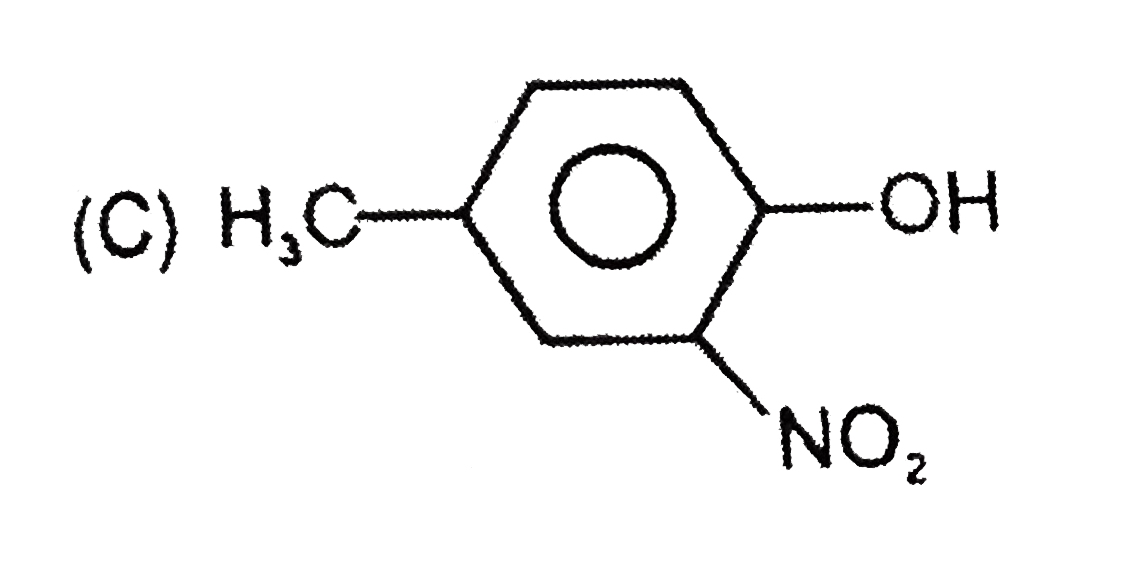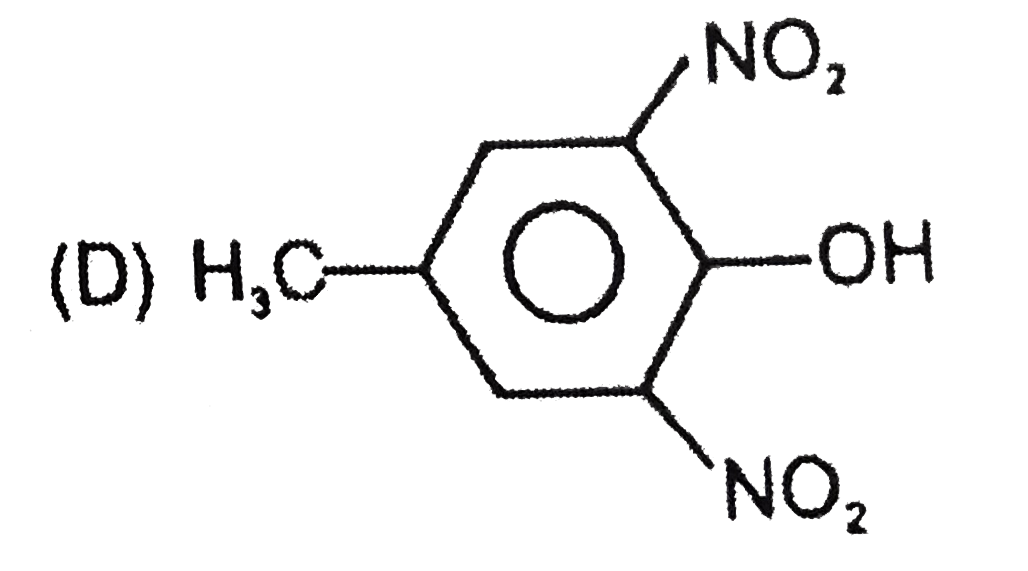pKa value of m-hydroxybenzoic acid is less / more than that of benzoic acid.
To determine whether the pKa value of m-hydroxybenzoic acid is less than or more than that of benzoic acid, we can follow these steps:
Step 1: Understand the Concept of Acidity
Acidity is defined by the ability of a substance to donate protons (H+ ions). The strength of an acid is often measured by its dissociation constant (Ka). A higher Ka value indicates a stronger acid, while a lower Ka value indicates a weaker acid.
Hint: Remember that stronger acids have lower pKa values because pKa is the negative logarithm of Ka.
Step 2: Define pKa
The pKa value is related to the dissociation constant (Ka) of an acid by the formula:
pKa=−log(Ka)
This means that if Ka is high (strong acid), pKa will be low, and if Ka is low (weak acid), pKa will be high.
Hint: pKa is a logarithmic scale; thus, small changes in Ka can lead to significant changes in pKa.
Step 3: Analyze the Structure of m-Hydroxybenzoic Acid and Benzoic Acid
- Benzoic Acid has the structure: C6H5COOH.
- m-Hydroxybenzoic Acid has a hydroxy (-OH) group on the meta position relative to the carboxylic acid group.
Hint: The position of substituents on the benzene ring can influence the stability of the conjugate base.
Step 4: Evaluate the Effect of the Hydroxy Group
The hydroxy group can influence the acidity of m-hydroxybenzoic acid. In this case, the -OH group is an electron-donating group, which can destabilize the negative charge on the conjugate base (the carboxylate ion) when compared to benzoic acid.
Hint: Electron-withdrawing groups increase acidity by stabilizing the negative charge, while electron-donating groups decrease acidity.
Step 5: Compare the Stability of Conjugate Bases
- The conjugate base of benzoic acid (C6H5COO-) is relatively stable.
- The conjugate base of m-hydroxybenzoic acid (C6H4(OH)COO-) is less stable due to the electron-donating effect of the hydroxy group.
Hint: The more stable the conjugate base, the stronger the acid.
Step 6: Conclusion on pKa Values
Since the conjugate base of m-hydroxybenzoic acid is less stable than that of benzoic acid, m-hydroxybenzoic acid is a weaker acid than benzoic acid. Therefore, the pKa value of m-hydroxybenzoic acid is higher than that of benzoic acid.
Final Answer: The pKa value of m-hydroxybenzoic acid is more than that of benzoic acid.
Acidity is defined by the ability of a substance to donate protons (H+ ions). The strength of an acid is often measured by its dissociation constant (Ka). A higher Ka value indicates a stronger acid, while a lower Ka value indicates a weaker acid.
The pKa value is related to the dissociation constant (Ka) of an acid by the formula:
pKa=−log(Ka)
This means that if Ka is high (strong acid), pKa will be low, and if Ka is low (weak acid), pKa will be high.
- Benzoic Acid has the structure: C6H5COOH.
- m-Hydroxybenzoic Acid has a hydroxy (-OH) group on the meta position relative to the carboxylic acid group.
The hydroxy group can influence the acidity of m-hydroxybenzoic acid. In this case, the -OH group is an electron-donating group, which can destabilize the negative charge on the conjugate base (the carboxylate ion) when compared to benzoic acid.
- The conjugate base of benzoic acid (C6H5COO-) is relatively stable.
- The conjugate base of m-hydroxybenzoic acid (C6H4(OH)COO-) is less stable due to the electron-donating effect of the hydroxy group.
Since the conjugate base of m-hydroxybenzoic acid is less stable than that of benzoic acid, m-hydroxybenzoic acid is a weaker acid than benzoic acid. Therefore, the pKa value of m-hydroxybenzoic acid is higher than that of benzoic acid.
Topper's Solved these Questions
- ALDEHYDES ,KETONES AND CARBOXYLIC ACIDSBOOK - MODERN PUBLICATIONCHAPTER - ALDEHYDES ,KETONES AND CARBOXYLIC ACIDSEXERCISE - REVISION EXERCISES (OBJECTIVE QUESTIONS - MULTIPLE CHOICE QUESTIONS )
45 Videos
- ALDEHYDES ,KETONES AND CARBOXYLIC ACIDSBOOK - MODERN PUBLICATIONCHAPTER - ALDEHYDES ,KETONES AND CARBOXYLIC ACIDSEXERCISE - REVISION EXERCISES (OBJECTIVE QUESTIONS - PASSAGE BASED QUESTIONS )
10 Videos
- ALDEHYDES ,KETONES AND CARBOXYLIC ACIDSBOOK - MODERN PUBLICATIONCHAPTER - ALDEHYDES ,KETONES AND CARBOXYLIC ACIDSEXERCISE - QUICK MEMORY TEST ( B. COMPLETE THE MISSING LINKS )
18 Videos
- ALCOHOLS, PHENOLS AND ETHERSBOOK - MODERN PUBLICATIONCHAPTER - ALCOHOLS, PHENOLS AND ETHERSEXERCISE - UNIT PRACTICE TEST (FOR BOARD EXAMINATION)
12 Videos
- BIOMOLECULESBOOK - MODERN PUBLICATIONCHAPTER - BIOMOLECULESEXERCISE - UNIT PRACTICE TEST FOR BOARD EXAMINATION
13 Videos
Similar Questions
Knowledge Check
Carbolic acid is less acidic than:
ACH3COOHB C
C D
D
Formic acid is more acidic than
ABenzoic acidBAcetic acidCPhenolDBenzene sulphoric acid
o-hydroxybenzoic acid is less/more acidic than p-hydroxy benzoic acid.
View SolutionpKa value of 4-nitrobenzoic acid is lower than that of benzoic acid. Why ?
View SolutionpKa value of 4- nitrobenzoic acid to lower than that of benzoic acid . Explain
View Solution(a) An organic compound with the molecular formula C9H10O forms 2, 4-DNP derivative, reduces Tollen's reagent and undergoes Cannizzaro reaction. On vigorous oxidation, it gives 1,2-benzenedicarboxylic acid. Identify the compound.
(B ) Arrange the following compounds in the increasing order of their reactivity in nucleophilic addition reaction : Ethanal, propanal, propanone, butanone.
(c) Although p-hydroxybenzoic acid is less acidic than benzoic acid, ortho hydroxybenzoic acid is about 15 times more acidic than benzoic acid. Explain.
View SolutionCarboxylic acids are distinctly acidic and ionise in water to give H3O+ ions. In general, electron withdrawing groups increase the acidity of carboxylic acids while electron donating groups decrease the acidity of the carboxylic acid. The electron releasing groups such as−CH3−OH,−NH2 and −OCH3 make benzoic acid weaker while electron withdrawing groups such as −CI,−NO2, etc., make benzoic acid stronger. The ortho isomer of every substituted benzoic acid is the strongest among the three isomers due to effect known as ortho effect. Carboxylic acids neutralise alkalies, decompose carbonates and bicarbonates evolving CO2 with brisk effervescence.
The pKa value of formic acid is less than that of acetic acid.True or False.
View SolutionThe pKa value of formic acid is smaller than that of acetic acid.( True/ false) explain it.
View Solution
